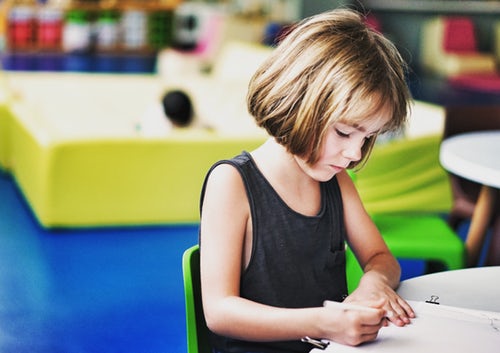It’s that time of year again. The time where the Target shelves are stocked with notebooks and markers and you begin to wonder how the summer flew by so quickly. For many parents, this change doesn’t mean a big difference in daily routines, but for the oldest at our school, with September comes a transition from the Montessori classroom they have been in for the past 3 years, to a more traditional school environment.
This transition comes with a wide range of emotions for both the parents and the child. Excitement, anticipation, anxiety and nerves to name a few. And many of our Montessori parents wonder how their child will transition into a more traditional setting. Wonder no more- we have put together a list of the most frequently asked questions about that big transition to elementary school and have provided our answers below.
What are the biggest differences between a Montessori and Traditional school?
There are three major differences between a Montessori classroom and a traditional classroom. First, the teacher’s purpose in the classroom, second, the environment/materials and third, the ages in the classroom.
In a Montessori classroom, the Teacher’s purpose is to guide the child’s learning. Their aim is to direct the classroom, one child at a time, while their Assistants help to observe, re-direct and manage the overall flow during a work cycle. In a traditional classroom, the Teacher’s purpose is to lead the whole class through pre-planned lessons throughout the day.
Second, the environments are set up differently. In a Montessori environment, the classroom is set up by area of learning with Montessori materials methodically placed on each shelf. There is freedom in what the child can choose to do during their work cycle, within the limits of what they are ready for.
Last, the room has children spanning a three year age range in the classroom, instead of all the same age. Because the teacher is following each child’s interests and abilities when planning lessons, a classroom with different ages works well. Since there is one main teacher in a traditional classroom, the children all are expected to have the same general level of understanding to make the process work
I have been told that Montessori schools allow the child too much freedom throughout the day. Will my child be able to operate in a more structured environment?
Montessori schools do offer a lot of freedom during the day, but it is important to note that with freedom comes responsibility. The children are able to walk around the classroom, choose the work they want to do, and choose when they want to sit, eat snack or go to the bathroom. However, if the child is not being responsible in their choices, the teacher will help them make a better choice and guide their learning or decision making, much like a traditional teacher. While your child may have to learn how to sit still for longer periods of time, or follow a more prepared lesson plan each day, they should be no stranger to listening attentively, respecting their peers and teacher and being an active participant in their learning.
What if my child is academically behind his peers in the classroom?
At this age, children tend to have different areas they are drawn to in the classroom. One child may be learning language at a level far above their peers and be learning math a little more slowly. The most important part of their learning experience is not the concepts they learn each day, but how they learn.
“Concepts will be taught differently, and the student will need to adapt to more traditional teaching methods. In my experience, even if a Montessori child finds him or herself behind the other students in a certain curricular area, they are able to catch up very easily. Remember, this is a child who has learned how to learn – where to find information on their own if they need it. They are accustomed to research and to tackling new subjects. These skills stand them in very good stead when they move to traditional school.” (http://www.blog.montessoriforeveryone.com/transitioning-from-montessori-to-a-traditional-school.html)
My child doesn’t know anyone else in the new classroom. Will this transition impact him socially?
Another great benefit of multi-age classrooms is that every year your child’s classroom will be filled with 30% new students. New friends to meet, teach and bond with over the next year. This transition will happen two times during your child’s time in Children’s House, not including when they were new students themselves. Emotionally, they will probably miss the friends they have bonded with over the past three years, but they are adaptable and well versed in meeting and building friendships with new kids that they share a classroom with.
What can I do to support my child during this transition?
We saved the most important question for last! As with any period of transition, your child may feel scared, excited, and nervous as they start their first week of school. The best thing you can do, is to be there for them, and to listen. For more ideas on how to support this transition, check out this great article, 12 Ways to Help a Child Make The Transition to Kindergarten. And post your ideas below!




Leave a Reply
Want to join the discussion?Feel free to contribute!